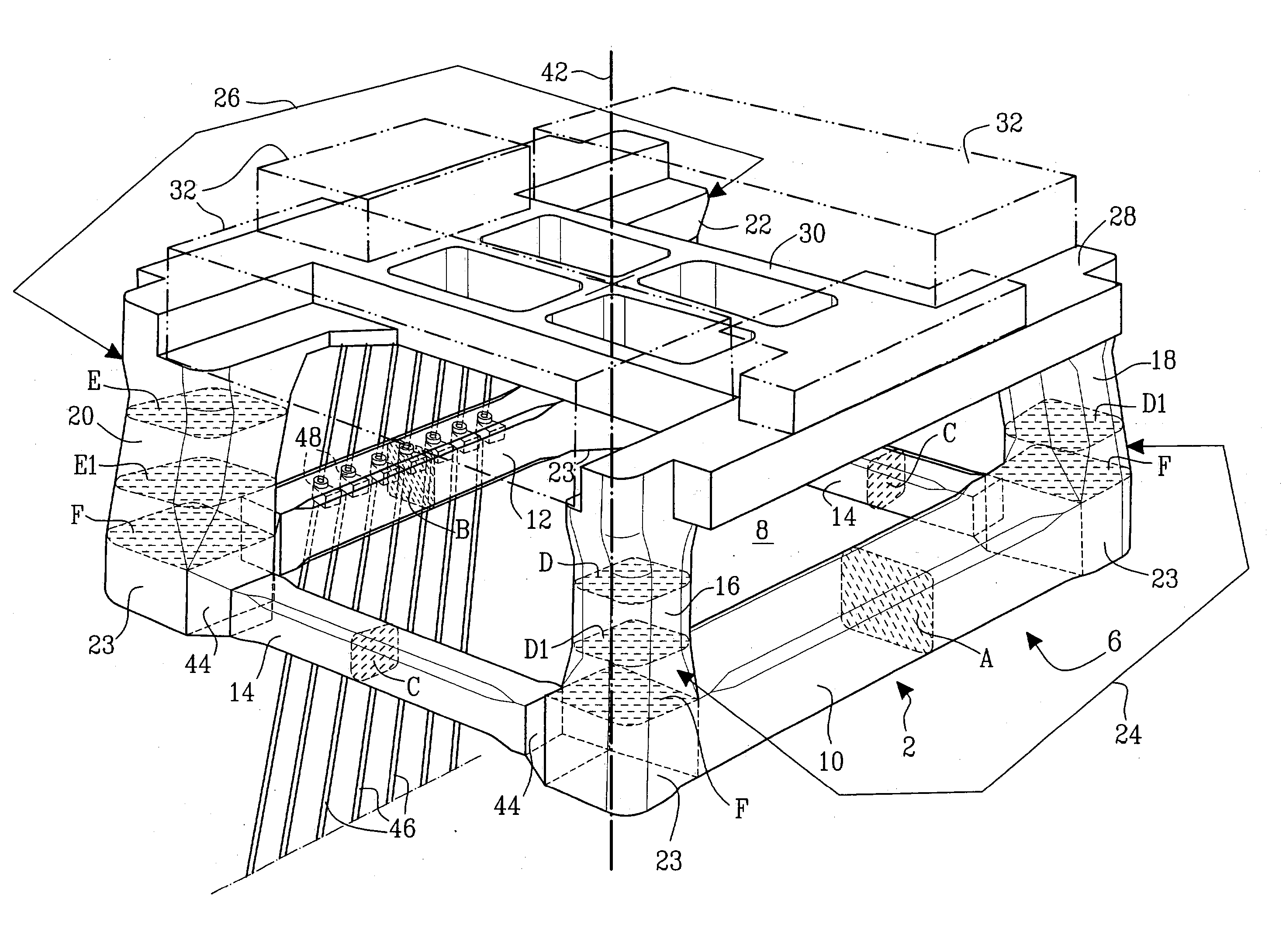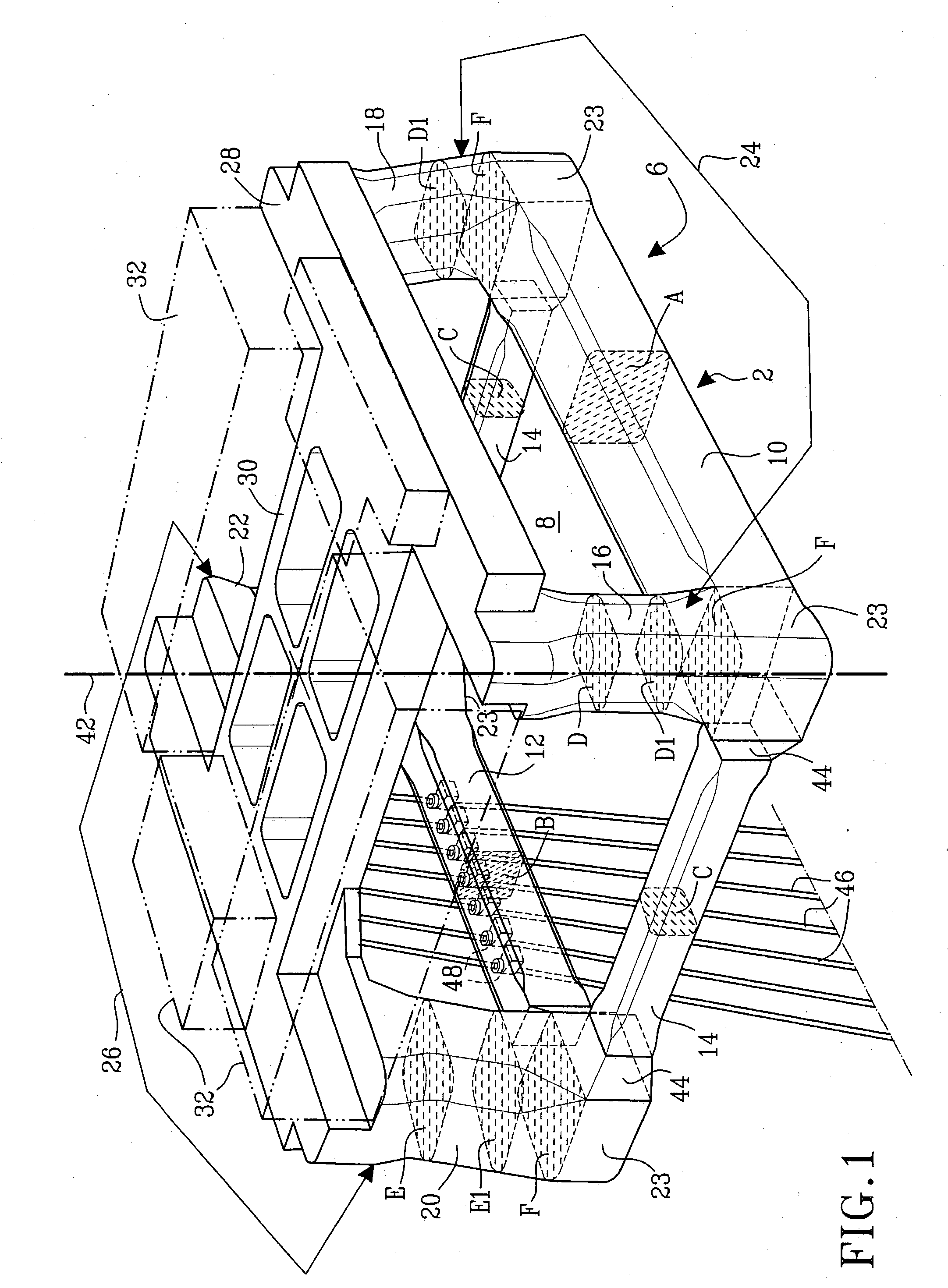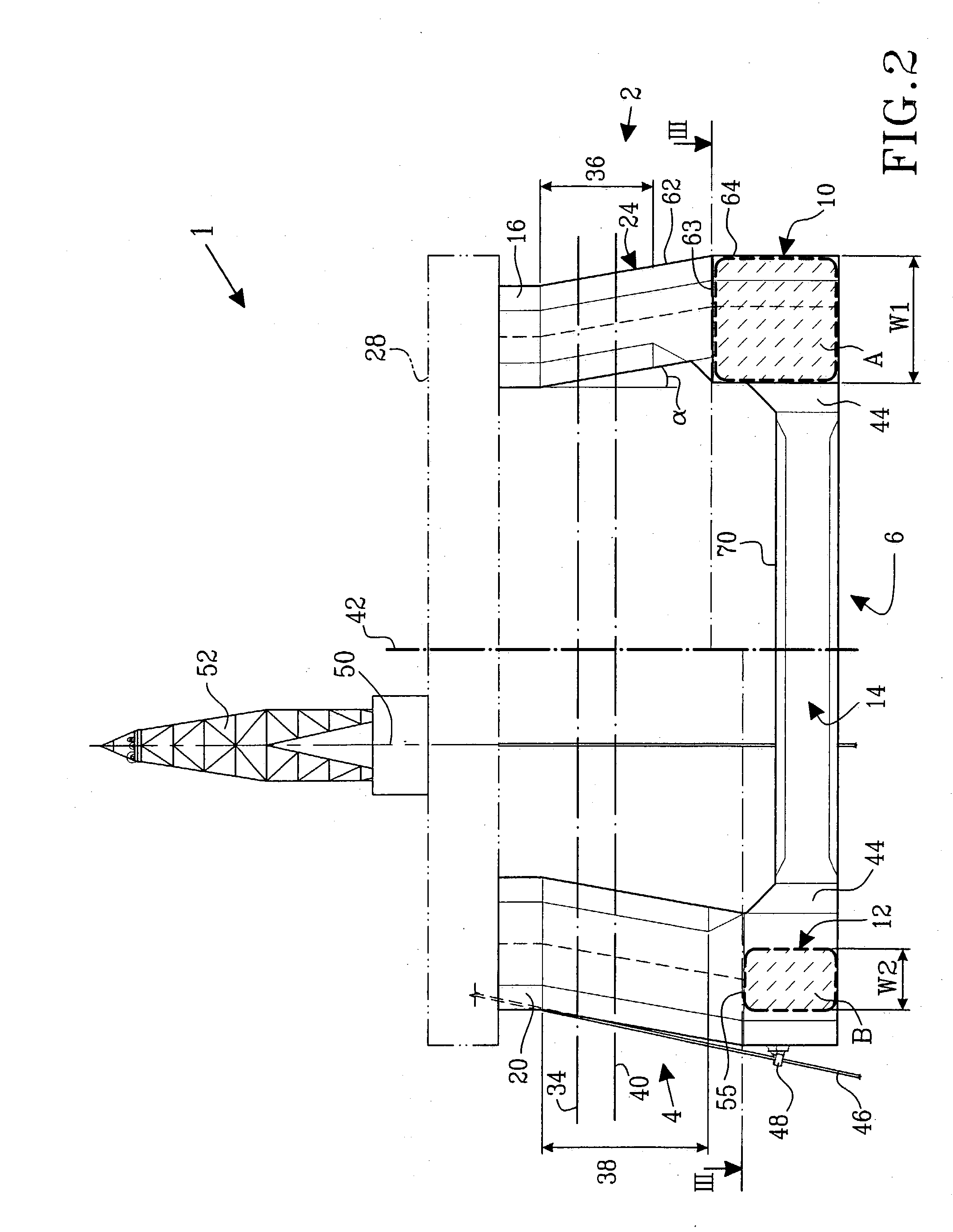Semi-submersible offshore vessel
a technology of submerged vessels and offshore vessels, applied in floating buildings, bulkheads/piles, artificial islands, etc., can solve problems such as metal fatigue sensitiveness, and achieve the effect of high exciting forces and low exciting forces
- Summary
- Abstract
- Description
- Claims
- Application Information
AI Technical Summary
Benefits of technology
Problems solved by technology
Method used
Image
Examples
Embodiment Construction
[0044] The present invention will hereinafter be described with reference to the accompanying drawings. In FIG. 1, reference numeral 1 denotes a semi-submersible offshore vessel according to a first exemplary embodiment of the invention. The offshore vessel 1 exhibits a first end 2 or example constituting the forward end of the vessel 1, and a second end 4, for example constituting the aft end of the vessel 1- or vice versa depending on definition preferences due to some embodiments being essentially of a square configuration.
[0045] The offshore vessel 1 includes a substantially rectangular ring-pontoon 6. The term “ring-pontoon” is here defined as a closed pontoon structure, which encloses a central opening 8. The ring-pontoon 6 includes a first transverse pontoon section 10 located at the first end 2 of the vessel 1, and a second transverse pontoon section 12 located at the second end 4 of the vessel 1. The second transverse pontoon section 12 is parallel to the first transverse ...
PUM
 Login to View More
Login to View More Abstract
Description
Claims
Application Information
 Login to View More
Login to View More - R&D
- Intellectual Property
- Life Sciences
- Materials
- Tech Scout
- Unparalleled Data Quality
- Higher Quality Content
- 60% Fewer Hallucinations
Browse by: Latest US Patents, China's latest patents, Technical Efficacy Thesaurus, Application Domain, Technology Topic, Popular Technical Reports.
© 2025 PatSnap. All rights reserved.Legal|Privacy policy|Modern Slavery Act Transparency Statement|Sitemap|About US| Contact US: help@patsnap.com



